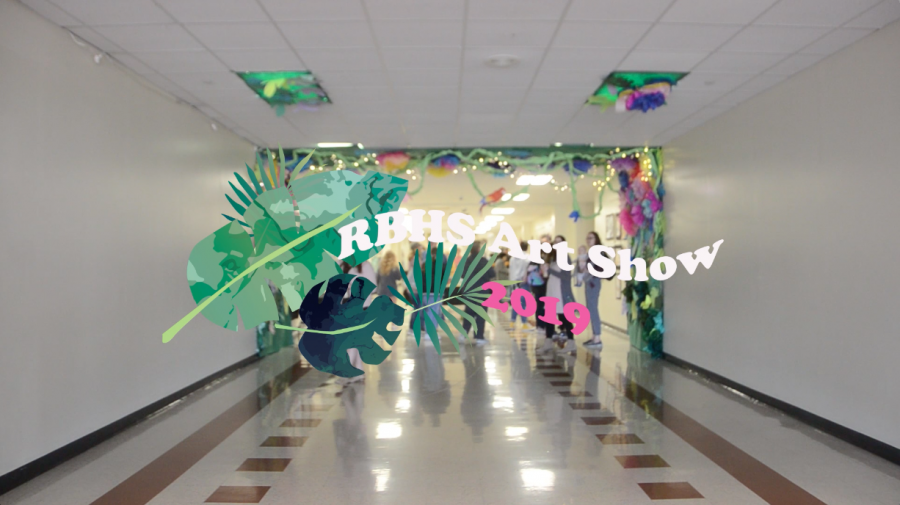In America, Hollywood celebrities are practically worshipped. From hysterical fangirls to reality enthusiasts, someone’s always keeping up with the showbiz royalty. Whether the boy band of the generation is the Jonas Brothers or One Direction, or whether the superstars of reality television are Paris Hilton or the Kardashians, the media projects them on the silver screen, and America watches with its eyes glued to the monitor.
It can be argued that if the United States has any good influence on the rest of the world, it’s through pop culture. Hollywood is the home of award shows and the red carpet, an event where people tune in to see which designers George Clooney and Emma Stone are wearing to the Oscars. American celebrities have millions of followers on social media, allowing everyone a 24/7 inside look into their everyday lives and the ability to see what kind of frozen yogurt they’re getting, or what color they just painted their nails.
But with Rock Bridge’s diverse population, students are revealing that pop culture corporations just as big in other countries, and they’re making billions of dollars off of industries as foreign to Americans as their language.
For sophomore Yash Khanna, a big part of life deals with the shifting interest of Hollywood vs. Bollywood, India’s film industry.
“I keep up with Bollywood and Hollywood celebrities about the same, maybe Hollywood even more,” Khanna said. “This is because the environment here certainly revolves more around Hollywood as opposed to Bollywood.”
Even though Khanna has more exposure to American celebrities, he still tries to stay informed on what’s happening in India. Like Khanna, senior Samuel Hiebert, an avid anime watcher, is more up-to-date with American pop culture than Japanese pop culture, and has to actively keep tabs on Japanese pop culture to be informed on it. The major difference he has noticed between anime and American shows is the contrast in priorities of what is most important in a show.
“There are very different standards and favored attributes in storytelling,” Hiebert said. “American audiences are drawn toward realism, tending to obsess over tiny details in both visuals and story, whereas Japanese movies and shows are widely understood to be purely for entertainment.”
While anime is one of the main aspects of Japanese pop culture and film, South Korea has an equally prominent music scene that is gaining popularity throughout the world at breakneck speed. Senior Danielle Wu started listening to K-pop in the sixth grade, but got more into it three years ago. What she particularly likes about it is the lack of sex, drugs and money depicted in the music as opposed to American music.
“A major difference is the immense sexual undertones of American pop culture,” Wu said. “Although there are some raunchy Korean songs and music videos, they aren’t to the extent of America’s.”
She said that often times, a movie that would be rated R in Korea would typically be rated PG-13 in the States. Like Wu, Khanna also likes the lack of obscenity in Bollywood compared to the movies produced in the United States.
“One major thing that I don’t necessarily like about American pop culture is the constant psychotic violence in movies and TV shows,” Khanna said. “In Bollywood, there is not that much violence, not saying that they don’t have it. They do, but it is a lot more here than there.”
What Khanna enjoys about Bollywood TV shows over American shows is that they are usually centered on family relationships. He watches a serial called Saas Bahu Aur Saazish, a drama about the tensions between a mother and daughter-in-law.
Bollywood made an income of $3 billion in 2011, and that number will rise by $1.5 billion next year, as reported by International Business Times. Bollywood is the most productive film industry in the world, making 1,000 films each year, nearly twice as many as Hollywood.
The reason it may seem not as widespread as American cinema may be because fewer than four percent of Indians go to the movies regularly as opposed to 39 percent of Americans recorded by Business Insider in 2012. However, four percent of India’s population of 1.28 billion is roughly 51.4 million people, so that’s most likely the reason why the industry is still afloat.
A stereotype Khanna feels is associated with Bollywood cinema is that all the movies are full of drama and sadness, when in reality, Khanna said, there are movies of all genres with unique storylines.
Although Khanna has had an interest in Indian pop culture his whole life, it is not an interest he shares with his friends. Because of the lack of exposure, Khanna said that none of his American friends really know anything about Bollywood. In contrast, Hiebert said he’s been able to attract most of his friends to anime.
“I don’t know if I have more than a couple friends who don’t watch anime at least occasionally,” Hiebert said. “I have a deeper appreciation for the aesthetics and values expressed in Japanese media than I do in our own. There’s a stylistic aspect that I resonate with, as well as messages of morality, personal drive and self worth.”
Hiebert feels that when most people think of anime, the first images often associated with it are bad animation and special effects, cheesy stories and poor treatment of female characters. But Hiebert said that was far more common in the ‘70s and ‘80s when Japanese filmography began acquiring more attention in the United States.
Fabrications Wu has observed that are often linked to K-pop include the notion that all Korean music is the bouncy, upbeat “bubblegum pop.” In reality, Wu said, K-pop includes almost every music genre, like hip-hop, R&B and rap. For example, a huge sensation talent show in Korea called “Show Me the Money” exclusively exhibits hip-hop and rap artists.
Another misconception Wu feels is common among people is that that all Koreans like K-pop, when really, the target audience is mainly teenagers. Wu compared K-pop artists to One Direction, explaining that their fanbase is significantly big, but not very diverse in terms of age. A change in that can be expected in K-pop, as well as anime and Bollywood, since over the past years, their popularity has done the opposite of decline.
With social media outlets continuing to increase, more and more people will begin to stumble upon these new-to-the-U.S. pop culture productions, spreading them more into the western world. The false impressions connected to foreign pop culture can prove irritating for those familiar with it . As stated by Wu, for the general public, K-pop rouses a common cliche.
“Two words,” Wu said. “Gangnam Style.”
Categories:
How American culture compares with others
October 7, 2015
0
Tags:

















































































